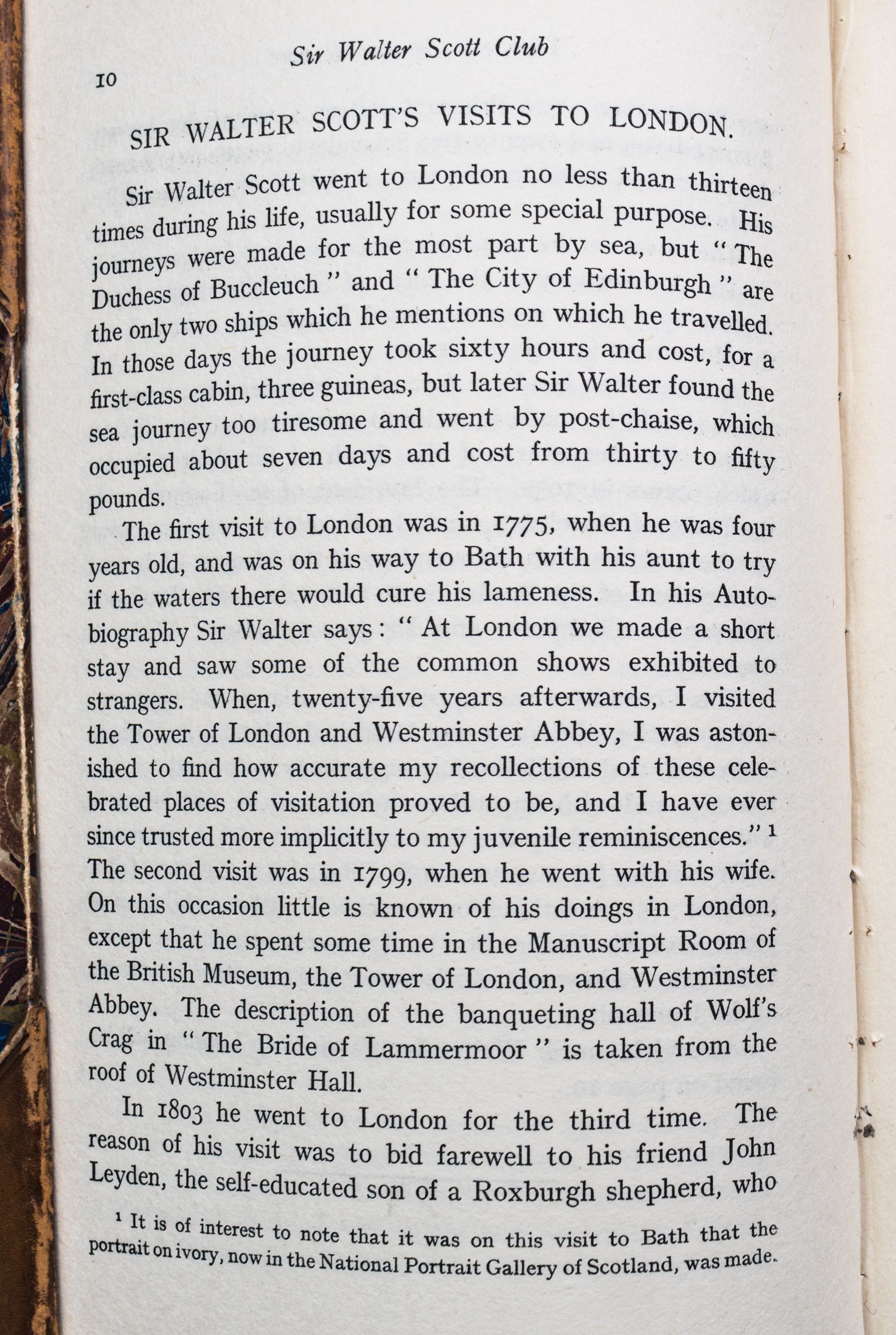Sir Walter Scott’s Visits to London
James Milligan
Article from 13th Annual Report
Summary of the Article:
Sir Walter Scott made thirteen visits to London over his lifetime, each with a specific purpose. His early trips included visits with family, the first in 1775 at age four to Bath for his lameness, and several other visits for both personal and professional reasons. Notable moments include:
- 1799: He visited with his wife and spent time at the British Museum and Westminster Abbey.
- 1803: He bid farewell to his friend, John Leyden, and spent time in London with M. Dumergue, the court dentist.
- 1806: He became famous for The Lay of the Last Minstrel and met influential figures like Joanna Baillie and Campbell.
- 1809: He spent two months in London after the success of Marmion.
- 1815: He visited London after the publication of Waverley and met Lord Byron and was entertained by the Prince Regent.
- 1820: He received his Baronetcy and met with Sir Thomas Laurence for portrait sittings.
- 1826: He visited during a time of personal financial hardship but stayed with the Lockharts and met literary figures like Fanny Burney.
- 1831: During his final visit, his health declined severely, and he longed to return to Abbotsford.
Scott’s last visit was in 1832, when he left London for the final time, having been deeply affected by illness, and died shortly afterward.
Interesting Points:
- First Visit at Age 4: Sir Walter’s first trip to London in 1775 was a memorable one. He recalled the places he visited, such as the Tower of London and Westminster Abbey, with remarkable accuracy even years later.
- Travelling by Sea & Post-Chaise: Early in his life, Scott travelled by sea, but found the sea journey tiresome, switching later to post-chaise, a more expensive and lengthy mode of transport.
- Interactions with Literary Figures: Throughout his visits, Scott met and befriended key figures in literature, including Joanna Baillie, Lord Byron, and Thomas Campbell. He also witnessed the reception of Waverley and its subsequent fame.
- Final Visit: His last trip in 1831 was marked by poor health. His longing for the Scottish landscape and his dogs reflects his deep attachment to his homeland, which he never returned to after that visit.
These highlights show Scott’s evolving relationships with both London and the literary community, as well as his personal struggles and eventual decline in health.
Download the [transcript] or read the [bulletin]

Download the [transcript] or read the [bulletin]


